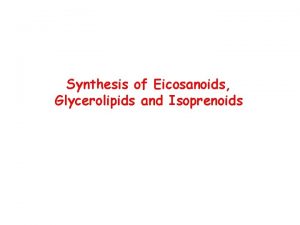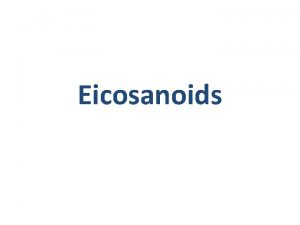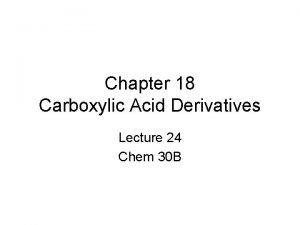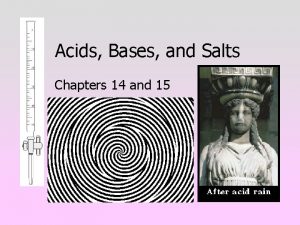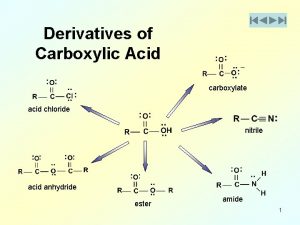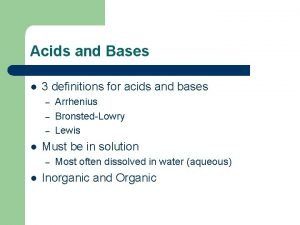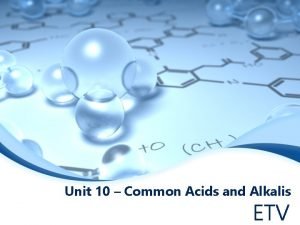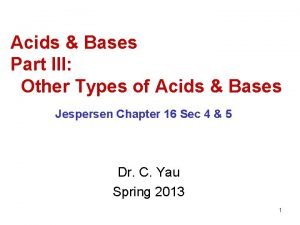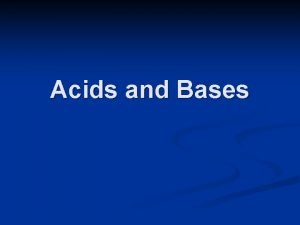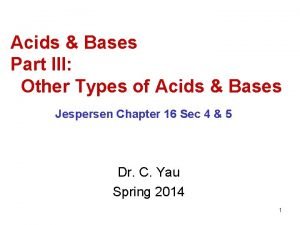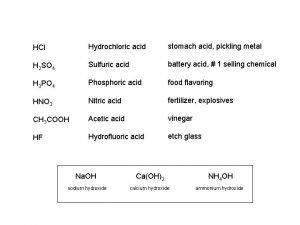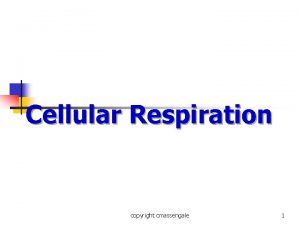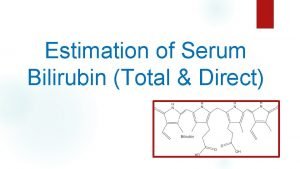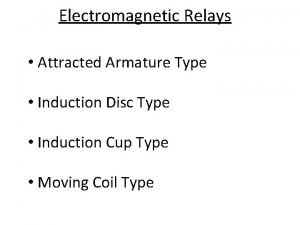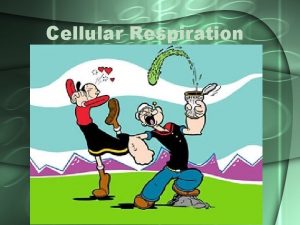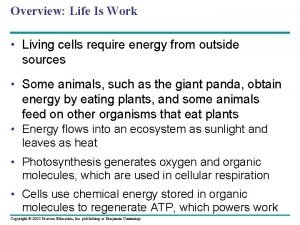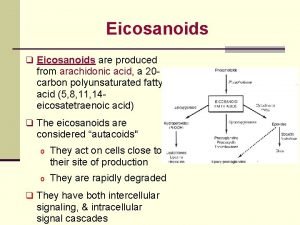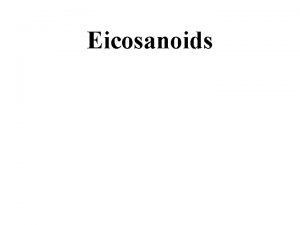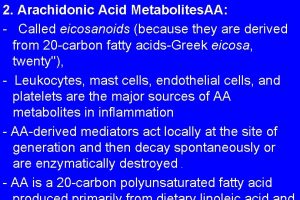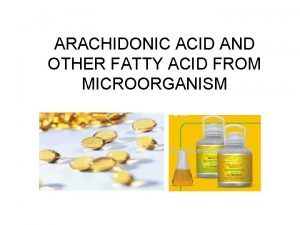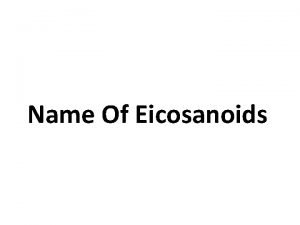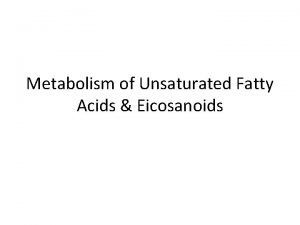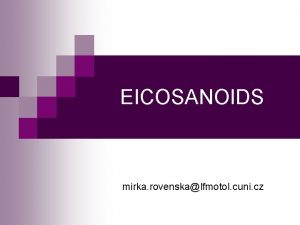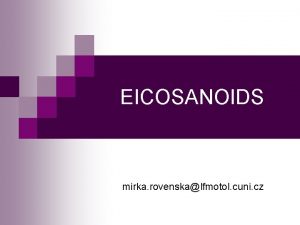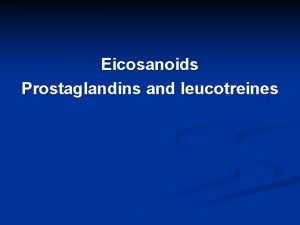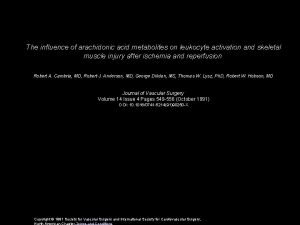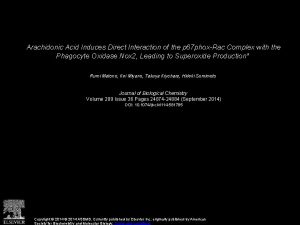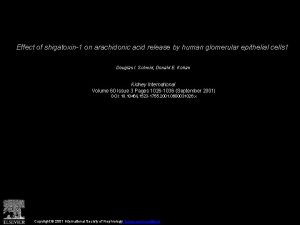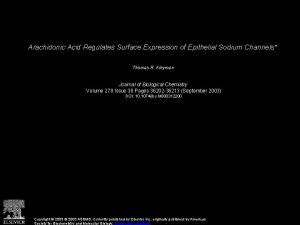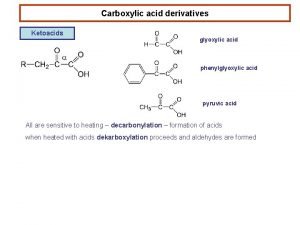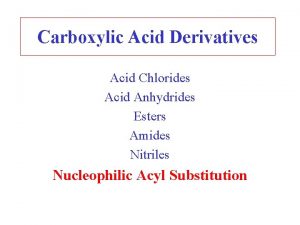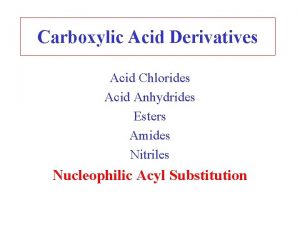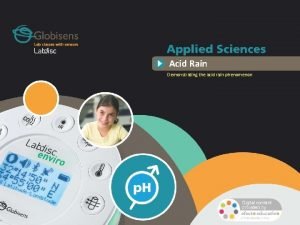Eicosanoids Eicosanoids Produced from arachidonic acid a 20



















- Slides: 19

Eicosanoids

Eicosanoids - Produced from arachidonic acid, a 20 -carbon polyunsaturated fatty acid (5, 8, 11, 14 -eicosatetraenoic acid). -The eicosanoids are considered "local hormones. " 1 - They have specific effects on target cells close to their site of formation and not transported to distal sites within the body. 2 - Rapidly degraded (short half life). 3 - Active at very low concentrations. 4 - Autocrine and paracrine signaling. 5 - There are various eicosanoid molecules and of receptors causing different effects in the organism. 6 - Participate in intercellular signaling and intracellular signal cascades. Types of eicosanoids: - Prostaglandins - Prostacyclins - Thromboxanes - Leukotrienes - Lipoxines.

- They have roles in: - Inflammation - Fever - Regulation of blood pressure - Blood clotting - Regulation of sleep/wake cycle. - Immune system modulation - Control of reproductive processes & tissue growth - Prostaglandins all have a cyclopentane ring, while, thromboxanes have instead a 6 -member ring. Synthesis of eicosanoids: Overview

Main eicosanoid production sites - Endothelial cells - Leukocytes - Platelets - Kidneys - Unlike e. g. histamin, eicosanoids are not synthesized in advance and stored in granules - In case of an emergent need, they are rapidly produced from a released arachidonate - Eicosanoid biosynthesis takes place in every cell type except red blood cells Main steps of eicosanoid production 1 - Activation of phospholipase A 2 (PLA 2) 2 - Release of arachidonate from membrane phospholipids by PLA 2 3 - Eicosanoids synthesis from arachidonate: COX or LO pathway further modifications by synthases/ isomerases depending on cell type.

1 - Activation of phospholipase A 2 - PLA 2 is activated by intracellular Ca 2+ concentration. - PLA 2 phosphorylation by MAPK and CAMKII plays a stimulating role. - Ligand binding to a receptor → phospholipase C activation : PIP 2 → DAG + IP 3, which opens Ca 2+ channels in ER. - By the action of Ca 2+ and phosphorylation, PLA 2 is translocated to the membranes of GA, ER and/or nucleus, from which arachidonate is released. Ligand: e. g. ATP released from dying cells plasma membrane tra ation activ ion nsl o cat NOS synthesis/ activation GA, ER, or nuclear membrane Ca

- PLA 2 hydrolyzes the ester linkage between a fatty acid and the OH at C 2 of the glycerol, releasing the fatty acid & lysophospholipid. - Corticosteroids are anti-inflammatory because they prevent the expression of PLA 2 → ↓ arachidonate release. - There are multiple PLA 2 enzymes, subject to activation via different signal cascades, platelet activating factor is involved in activating some PLA 2 variants. - Success to develop drugs that can inhibit particular isoforms of PLA 2 for treating inflammatory diseases has been limited by the diversity of PLA 2 enzymes, and the fact that arachidonate may give rise to inflammatory or anti-inflammatory eicosanoids in different tissues. - After PI is phosphorylated to PIP 2, cleavage via phospholipase C yields diacylglycerol and IP 3. - Arachidonate release from diacylglycerol is then catalyzed by diacylglycerol lipase.

PLA 2 expression / activity stimulate: - Interleukin-1 - Angiotensin II - Bradykinin - Thrombin - Epinephrine… PLA 2 expression / activity block: - Dexametason (synt. corticoid) - Annexin 1 (lipocortin) – protein inducible by glucocorticoids - Caspase-3 2 - Arachidonate mobilization for eicosanoid synthesis from membrane phospholipids, mostly by the action of PLA 2 3 - Eicosanoid biosynthesis By 3 pathways: A- Cyclooxygenase (COX): produces prostaglandins, thromboxanes and prostacyclines. B- Lipoxygenase (LO): produces leukotrienes, lipoxins, hepoxilins and 12 and 15 -HETE (hydroxyeicosatetraenoic acids) C- Cytochrome P 450 enzyme (monooxygenase): produces HETE, e. g. 20 -HETE; it is a main pathway in kidney proximal tubules.

A- COX pathway - PGH synthase (PGHS), catalyzes the committed step in the “cyclic pathway” that leads to the production of PGH 2, a precursor for prostaglandins, prostacyclines & thromboxanes - Different cell types convert PGH 2 to different compounds. - PGHS exists in 2 isoforms (PGHS-1/COX-1, PGHS-2/COX-2) and has two different activities: 1 - Cyclooxygenase (COX): catalyses addition of two molecules of O 2 into arachidonate molecule forming PGG 2 2 - Hydroperoxidase: uses glutathione to convert PGG 2 into PGH 2 - A particular cell type produces mostly one particular prostanoid type: platelets produce almost exclusively tromboxanes (because of containing thromboxane synthase); vascular endothelial cells produce prostacyclins (because of containing prostacyclin synthase); myocardium cells produce mainly PGI 2, PGE 2, PGF 2

Inhibition of COX pathway - Aspirin inhibits irreversibly COX activity of PGHS-1 and PGHS-2 (by acetylation of enzyme serine). - Other non-steroidal anti-inflammatory drugs inhibit COX activity (ibuprofen competes with arachidonate). - Anti-inflammatory corticosteroids block PGHS-2 transcription, so, they inhibit formation of prostaglandins involved in fever, pain and inflammation. - They inhibit blood clotting by blocking thromboxane formation in platelets. - Thromboxane A 2 stimulates platelets aggregation for blood clotting. - Aspirin effect is long-lived because platelets lack a nucleus and do not make new enzyme.

Cyclopentane ring 6 -membered ring containing one oxygen atom

-The two isoforms of PGH 2 Synthase: 1 - COX-1 is constitutively expressed at low levels in many cell types. 2 - COX-2 expression is highly regulated. - Transcription of the gene encoding for COX-2 is stimulated by growth factors, cytokines, and endotoxins. - COX-2 expression may be enhanced by c. AMP, and in many cells PGE 2 produced as a result of COX-2 activity itself leads to changes in c. AMP levels. - Both catalyze PGH 2 formation, but differing localization within a cell of enzymes that convert PGH 2 into particular prostaglandins/ thromboxanes, may result in COX-1 and COX-2 yielding different ultimate products. - COX-1 is essential for thromboxane formation in blood platelets, and for maintaining integrity of the gastrointestinal epithelium. - COX-2 levels increase in inflammatory diseases such as arthritis. - Inflammation is associated with up-regulation of COX-2 → increase amounts of particular prostaglandins.

- COX-2 expression is increased in some cancer cells, it enhances angiogenesis which is essential for tumor growth by increasing the expression of vascular endothelial growth factor (VEGF). - Regular use of NSAIDs has been shown to decrease the risk of developing colorectal cancer. - Most NSAIDs inhibit both COX I and COX II. - Some evidence suggests the existence of a third isoform of PGH 2 synthase, designated COX-3, with roles in mediating pain and fever.

B- LO pathway - 3 different lipoxygenases introduce oxygen to position 5, 12 or 15 in arachidonate; a primary product is hydroperoxy-eicosatetraenoic acid (HPETE) - Only 5 -lipoxygenase produces leukotrienes; it requires protein FLAP (5 -lipooxygenase activating protein). - Many of the products have signal roles. - Leukotrienes have roles in inflammation, produced in inflammation areas of blood vessel walls as part of the pathology of atherosclerosis. - Leukotrienes are also implicated in asthmatic constriction of the bronchioles. - Some leukotrienes act via specific G-protein coupled receptors (GPCRs) in the plasma membrane. - Anti-asthma medications include: 1 - Inhibitors of 5 -lipoxygenase 2 - Drugs that block leukotriene-receptor interactions (block binding of leukotrienes to their receptors on the plasma membranes of airway smooth muscle cells).


- FLAP binds arachidonate, facilitating its interaction with the enzyme. - Translocation of 5 -lipoxygenase from the cytoplasm to the nucleus, and formation of a complex including 5 -lipoxygenase, FLAP and PLA 2 in association with the nuclear envelope has been observed during activation of leukotrienes synthesis in leukocytes. C- Synthesis of eicosanoids by enzymes CYP 450 (monooxygenase) RH + O 2 + NADPH+H+ →ROH + H 2 O + NADP+ - Two types of compounds are produced: 1 - Epoxygenases catalyze production of epoxyeicosatrienoic acids (EETs), which are metabolized by epoxid-hydrolases into almost inactive dihydroxyeicosatrienoic acids (Di. HETEs) 2 - Hydroxylases catalyze production of HETEs (20 -HETE, 13 -HETE etc. ).

Prostaglandin receptors: - Prostaglandins and related compounds are transported out of the cells that synthesize them. - Most affect other cells by interacting with plasma membrane Gprotein coupled receptors. - Depending on the cell type, the activated G-protein may stimulate or inhibit formation of c. AMP, or may activate a phosphatidylinositol signal pathway leading to intracellular Ca++ release. - Another prostaglandin receptor, designated PPARg, is related to a family of nuclear receptors with transcription factor activity. - Different receptors for a particular prostaglandin may activate different signal cascades. - Effects of a particular prostaglandin may vary in different tissues, depending on which receptors are expressed. e. g. , in different cells PGE 2 may activate either Gs or Gi proteins, leading to either ↑or ↓in c. AMP formation.

Prostanoid signaling -Through G-protein-coupled receptors: A- G s activate adenylate cyclase → ↑ c. AMP → activates PKA B- G i inhibit adenylate cyclase C- Gq activates phospholipase C (it requires Ca 2+), which cleaves PIP 2 to IP 3 and DAG). - DAG and Ca 2+ activate PKC, - IP 3 opens Ca 2+ channels in ER. Slow reacting substance of anaphylaxis (SRS-A) - It is a mixture of LTC 4, LTD 4 and LTE 4 - More potent than histamine, constrictor of bronchial airway musculature - Increase vascular permeability - Attraction and activation of leucocytes.


G O O D L U C K
 Asprin
Asprin Function of eicosanoids
Function of eicosanoids N-ethyl-3-butanolactam
N-ethyl-3-butanolactam 7 strong acid
7 strong acid Acyl chloride to nitrile
Acyl chloride to nitrile Example of acid-fast bacteria
Example of acid-fast bacteria Hcl lewis acid or base
Hcl lewis acid or base 9-which acid is not considered a strong acid?
9-which acid is not considered a strong acid? Lewis acid vs bronsted acid
Lewis acid vs bronsted acid Is sulfuric acid a weak acid
Is sulfuric acid a weak acid Example of acid-fast bacteria
Example of acid-fast bacteria Lewis acid bronsted acid
Lewis acid bronsted acid Stomach acid vs battery acid
Stomach acid vs battery acid Krebs cycle atp yield
Krebs cycle atp yield Bilirubin test principle
Bilirubin test principle Induction disc relay diagram
Induction disc relay diagram If a diploid egg was produced by mitosis
If a diploid egg was produced by mitosis What is produced in cellular respiration
What is produced in cellular respiration Working title television
Working title television Total atp produced in cellular respiration
Total atp produced in cellular respiration
